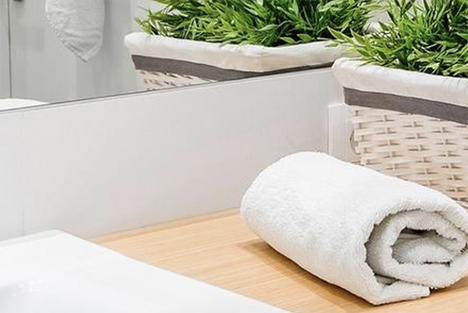
The sad truth is mold exists everywhere. There are no indoor spaces without it. And if you are allergic to mold, exposure to it can trigger allergic reactions and asthma symptoms. Researchers are currently investigating whether damp indoor environments and mold may actually cause upper and lower respiratory problems. Even without allergies, airborne mold particles can cause irritation in your eyes, skin, nose, throat and lungs.
- Worsening of asthma
- Coughing
- Wheezing
- Nasal congestion
- Sore throat
- Sneezing
- Rhinitis
A somewhat uncommon disease known as hypersensitivity pneumonitis has also been associated with exposure to indoor mold in people who have weakened immune systems. People who suffer from this disease experience flu-like symptoms.
Molds are fungi that reproduce by forming spores, which travel through the air, settle on other plant or animal organic material and grow into new clusters. Covering large distances, and often outnumbering pollen particles, mold makes life difficult for those sensitive to spores and their roaming ways.
Molds often grow in damp areas in a house, such as basements or bathrooms. But your garden is also a great place for mold spores, as they thrive in damp leaves and compost. So, to get rid of mold spores, rake your yard of fallen leaves and remove leaves from gutters. Keep compost and yard-waste piles as far away from the house as possible, and wear a protective mask when raking leaves and cleaning compost bins
Dampness and mold do tend to come as a package deal. Dampness is mostly related to moisture you can see, like leaks or high humidity conditions. Living or working in a damp home or building means being in an environment where mold spores thrive. A musty odor, moisture on hard surfaces and water stains that signify leaks or condensation are all symptoms of mold-friendly environment. In addition to mold, damp conditions create good conditions for the growth of other indoor pollutants, such dust mites, bacteria and viruses.
Water that leads to damp indoor environments can come from many sources. Since some are impossible to avoid, it’s important to keep all indoor spaces well ventilated. Problems usually start when materials are wet long enough for mold to grow. If you do discover a water problem, fix it quickly, before mold can take hold.
- Flooding or leaks that allow rainwater indoors
- Poorly connected plumbing and leaky pipes
- Continually damp carpet (may occur if carpet is installed on poorly ventilated floor)
- Inadequate exhaust of bathrooms and kitchens
- Outdoor humidity
- Condensation or moisture build-up in humidifiers, dehumidifiers, air conditioners and drip pans under refrigerator cooling coils
Mold prevention means limiting the moisture. Some of the biggest moisture sources are air conditioning units; basements, attics and crawl spaces; bathrooms; humidifiers and dehumidifiers; and refrigerators. Again, it’s important to fix all leaks and maintain a well-ventilated environment. Running your exhaust fans in the bathroom and kitchen will help reduce moisture. Regularly and thoroughly clean places where molds are likely to grow. Mold prevention also includes keeping indoor humidity levels below 50 percent.
During the cleaning process to remove mold from your environment, mold spores become airborne. To get rid of mold spores from indoor air, a high performing air purifier with certified for mold removal should be used.
- Use a dehumidifier in the house, especially in the basement. Air should be between 35 and 50 percent humidity.
- Clean bathrooms and the kitchen regularly, preferably with a non-chemical solution such as vinegar.
- Use test-winning air purifiers, delivering high CADR (Clean Air Delivery Rate).
- Rake your yard of fallen leaves and remove leaves from gutters. Keep compost and yard-waste piles as far away from the house as possible, and wear a protective mask when raking leaves and cleaning compost bins.
Blueair air purifiers are simple to use and have something special: We are the only major air purifier brand to verify 100% of our models for performance for Clean Air Delivery Rate (CADR).


